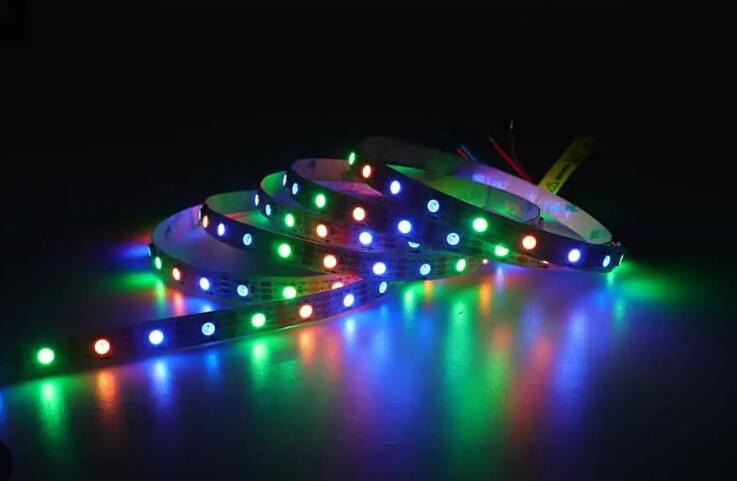Release time:Apr 09,2024View:14637
Programmable LED strips, also known as pixel LED strips, work by incorporating individual addressable LEDs into a flexible strip. Each LED contains a tiny integrated circuit with its own memory, allowing it to be controlled independently of the other LEDs on the strip. Here's how they work:

Addressable LEDs: The key component of programmable LED strips is the addressable LED itself. Each LED contains a microcontroller, typically based on technologies like WS2812B, APA102, SK6812, etc. This microcontroller has its own memory and can be individually controlled to display different colors and brightness levels.
Data transmission: The LED strip has three main connections: power (VCC), ground (GND), and data (usually labeled "DI" for Data In and "DO" for Data Out). The data line carries information about the color and brightness for each LED along the strip.
Control signals: A microcontroller or LED controller sends control signals to the LED strip through the data line. These control signals contain information about the desired color and brightness for each LED. The LED strip reads these signals and updates the color and brightness of each LED accordingly.
Color mixing: Each LED typically has three channels for controlling the intensity of red, green, and blue (RGB) light. By adjusting the intensity of each channel, a wide range of colors can be produced. Some LED strips also feature additional channels for controlling white or other colors.
Programming: To control a programmable LED strip, you need to write code that specifies the colors and brightness levels for each LED. This code is usually written in a programming language such as C/C++ for microcontrollers like Arduino, or Python for devices like Raspberry Pi.
Power supply: Since LED strips can draw significant power, especially when many LEDs are illuminated at once, it's important to provide an adequate power supply. The power supply voltage and current should match the specifications of the LED strip to ensure reliable operation.
Overall, programmable LED strips offer a versatile and customizable lighting solution for various applications, including decorative lighting, signage, art installations, and more. They allow for intricate patterns, animations, and effects to be created, making them popular in DIY projects and professional lighting design alike.
Shenzhen, China 518103

